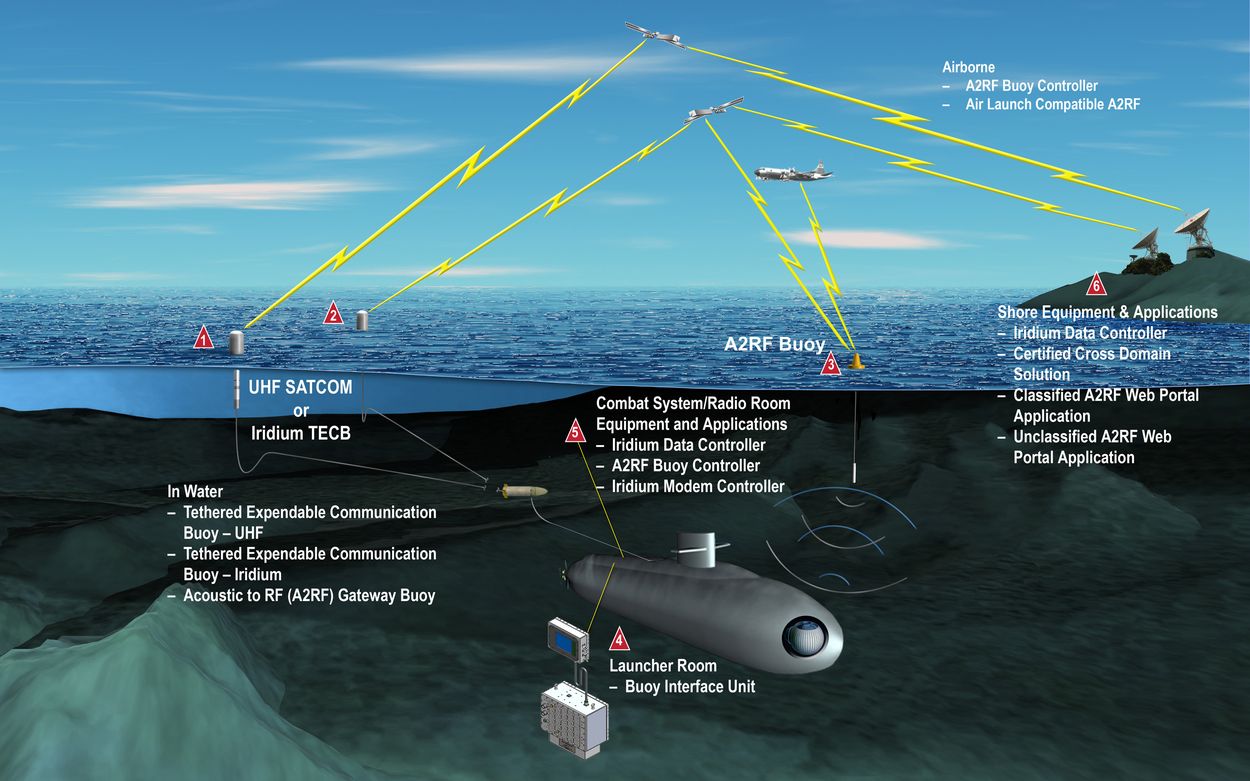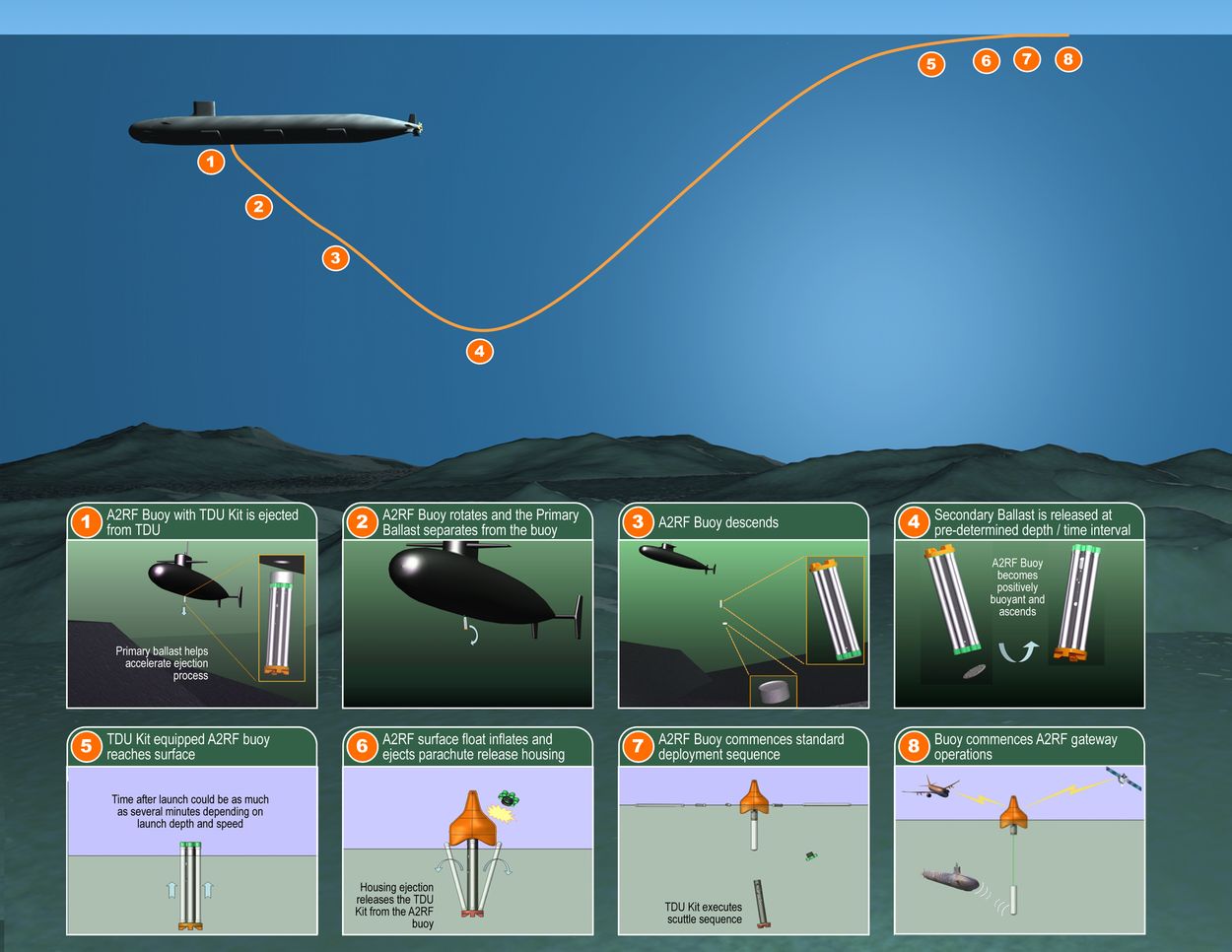Communicating with a submerged submarine has always been difficult, and since the submarine has to come up to periscope depth it has also been risky. Now a new buoy developed by Lockheed Martin should enable stealth submarines to send and receive text messages while remaining safely at depth.
At present, nuclear submarines that remain at depths for weeks or even months can receive messages while submerged but cannot reply. The transmissions are extremely low frequency (ELF, at 3-3000 Hz), or very low frequency (VLF, at 3000-30,000 Hz), and the antennas required are dozens of miles long. Only a handful of ELF transmitters exist, and only two of them are in the US. If the submarine needs to reply, or if complex communications beyond alphanumerics is needed, the submarine must come up to at least periscope depth to raise an antenna above the surface, and this makes the sub more vulnerable to attack.
Rod Reints, who leads the Lockheed Martin Communications at Speed and Depth program explained that many people think subs can easily make phone calls, but they do not really have that luxury. There have been attempts to bring submarines onto the US Defense Department Global Information Grid along with all the other Navy ships, such as the High Frequency Active Auroral Research Program, which investigated using the ionosphere as an antenna for communication. The idea was to excite the upper atmosphere with high-frequency radio waves, and it would then emit the ELF bands required for one-way communicate with submerged submarines.

The new system is the first two-way communication method for submarines at depth. The actual depth is classified, but according to Reints the cables attached to the tethered buoys are “measured in miles” and would allow them to be launched from “a significant depth.” The submarine could continue normal operations at its normal speed while communicating.
Lockheed Martin is developing three versions of the communication buoys in conjunction with Erapsco and Ultra Electronics Ocean Systems. One version is tethered to the submarine and communicates with the sub via fiber optic cable and with the outside world via the Iridium satellite constellation. A second version is also attached, but it communicates with the outside world via UHF. The third version is an unattached acoustic-to-RF buoy that can be dropped from the air or launched from the submarine’s garbage disposal chute.

All three versions are expendable. The untethered buoys retain power for three days, while the batteries in the tethered buoys last for around 30 minutes. When power is lost they scuttle themselves.
The one-meter-long buoys should enable submerged stealth submarines to be as connected to the Defense Department grid as any other vessel in the Navy. At the moment the emphasis in on two-way text communications, but voice communication could also be possible and has been successfully tested on the Iridium satellite version.
The first buoys are expected to begin Navy sea trials by January next year
http://phys.org/news/2010-07-buoys-enable-submerged-subs.html#jCp
